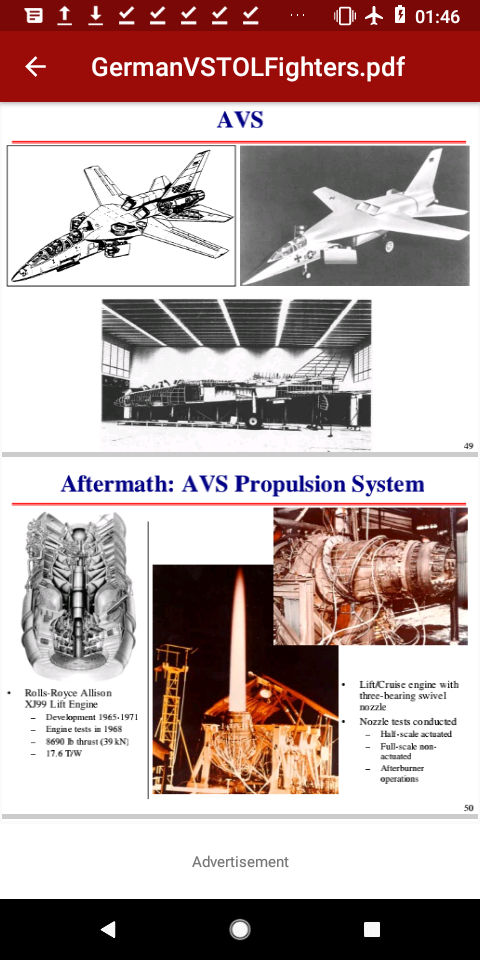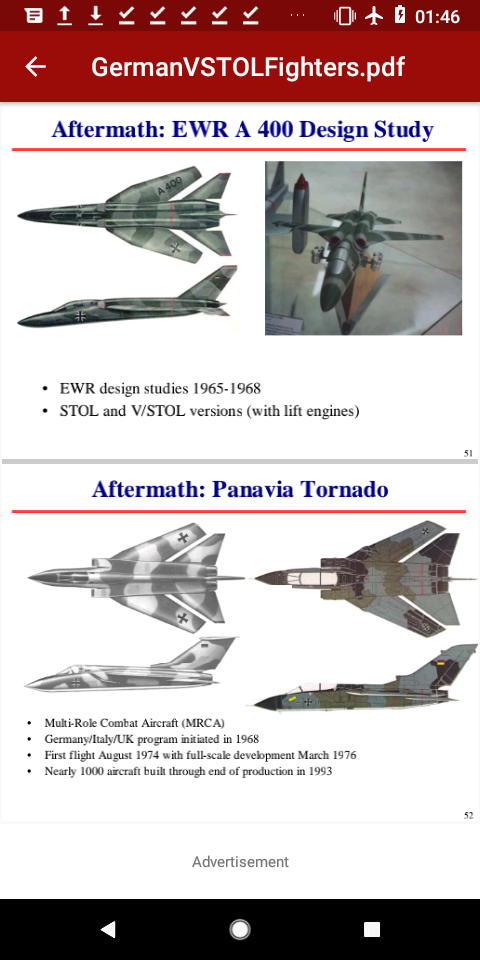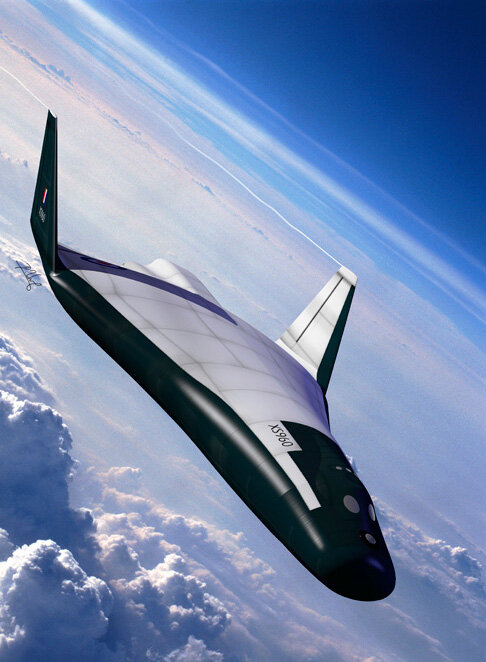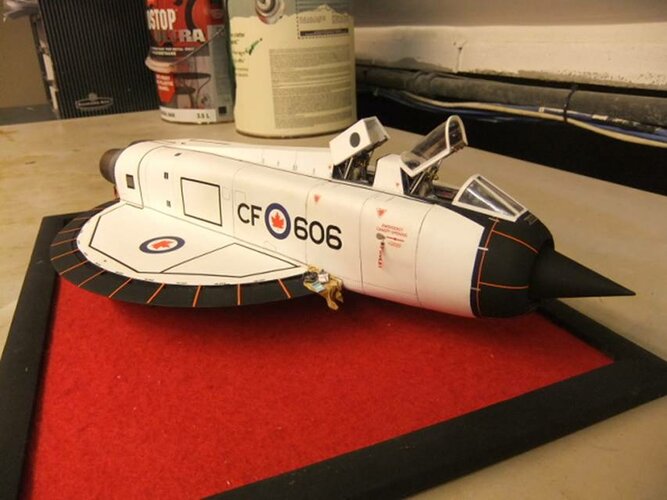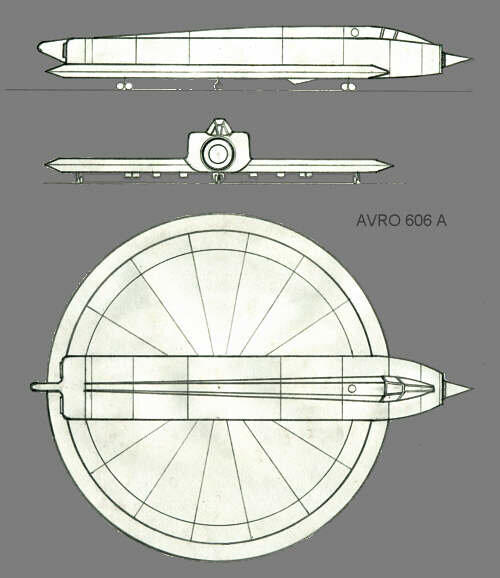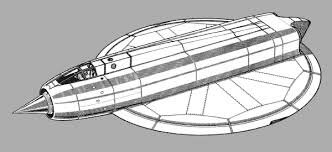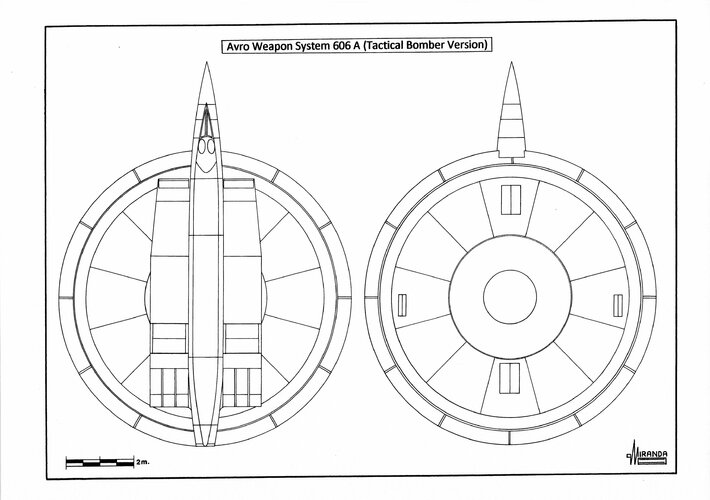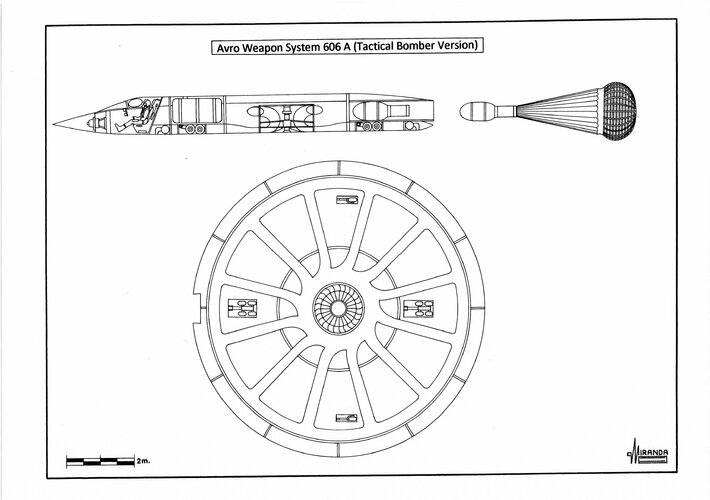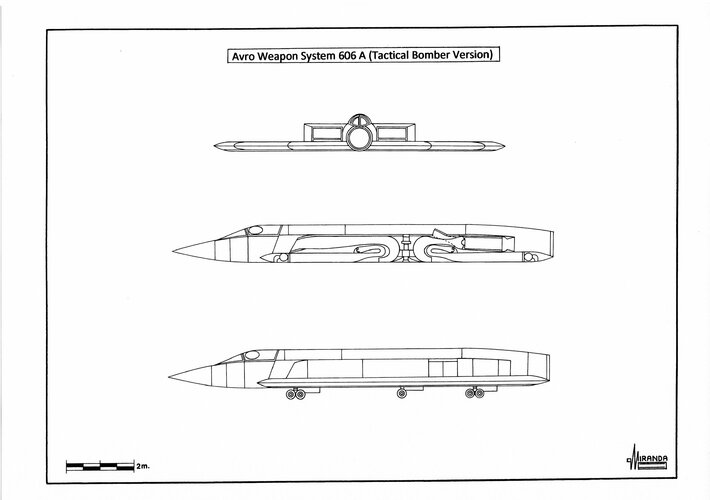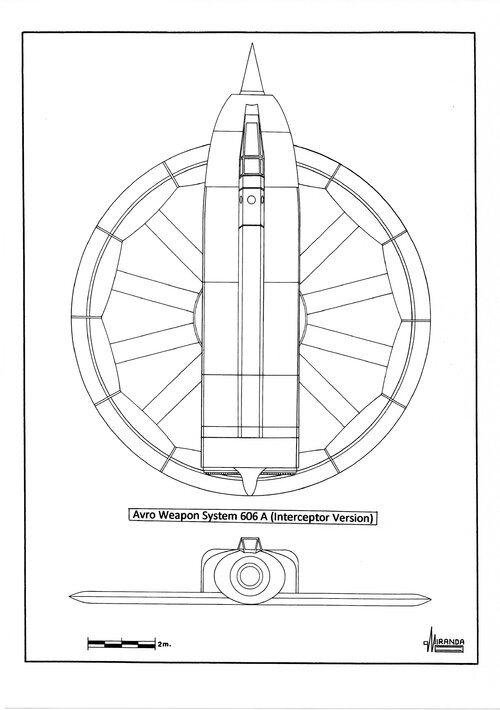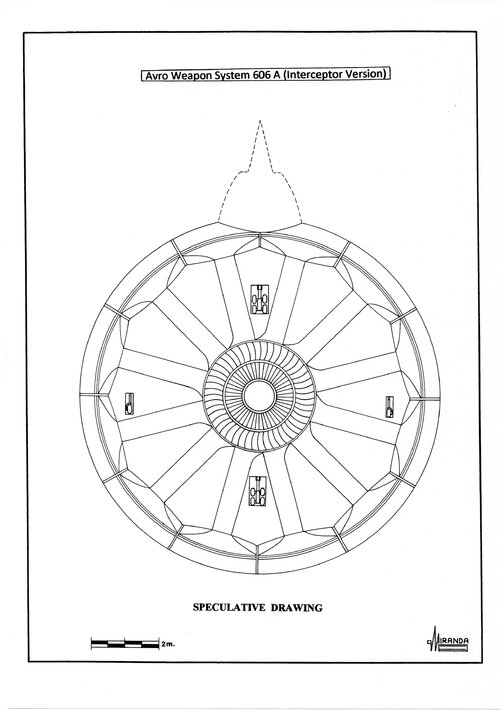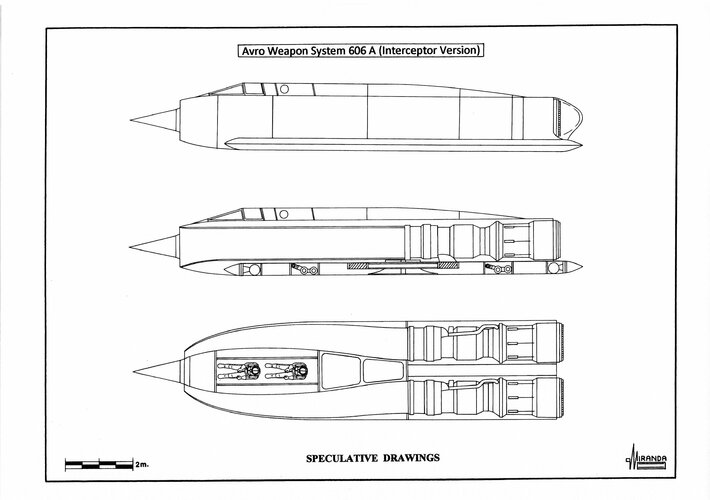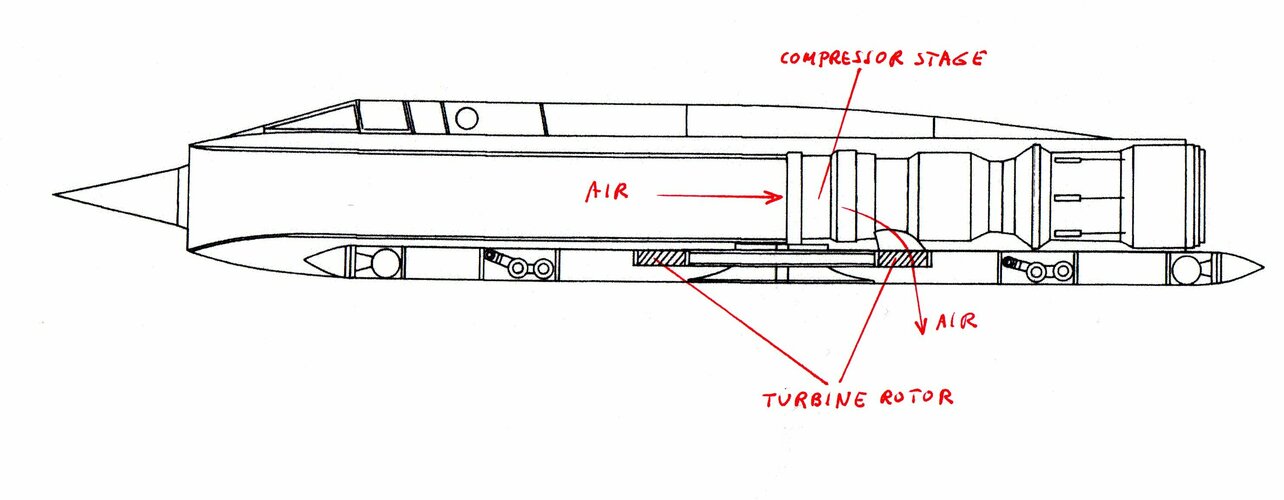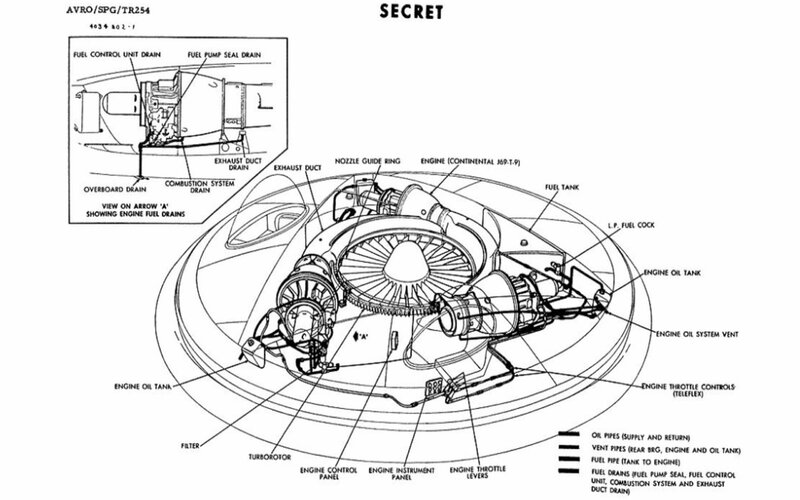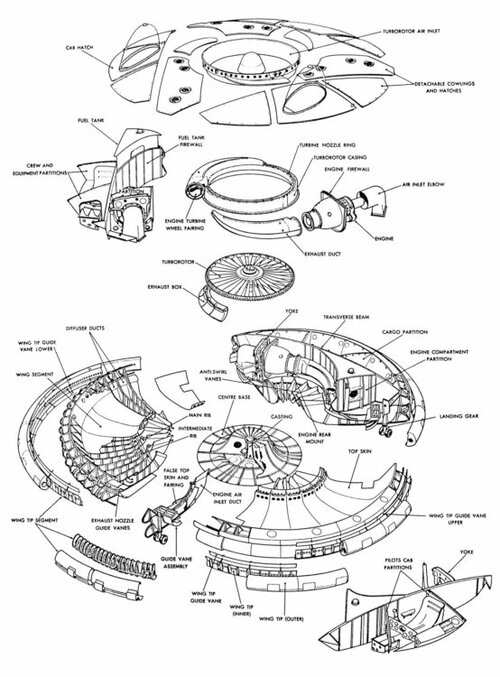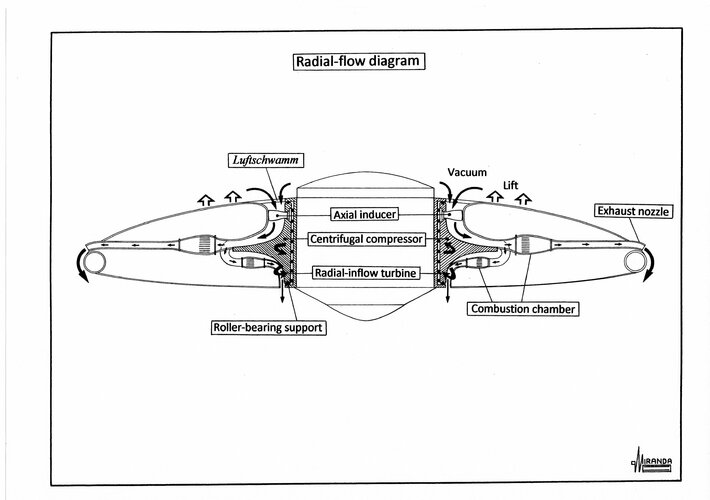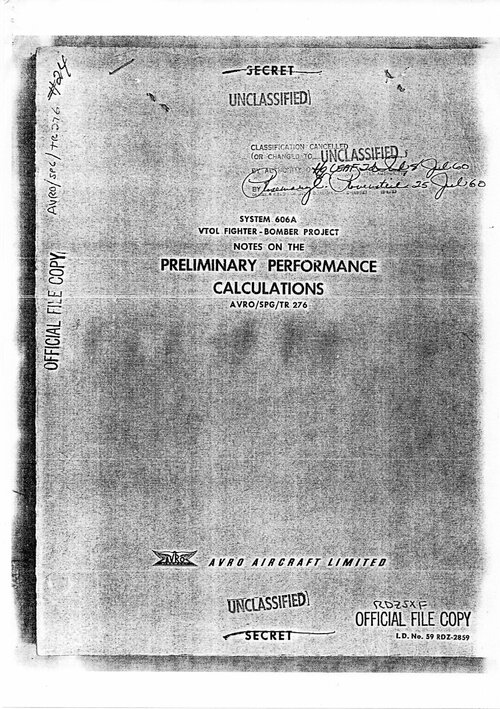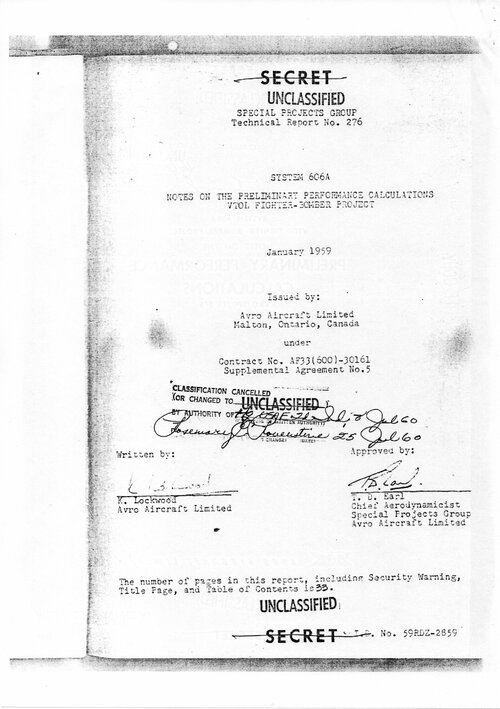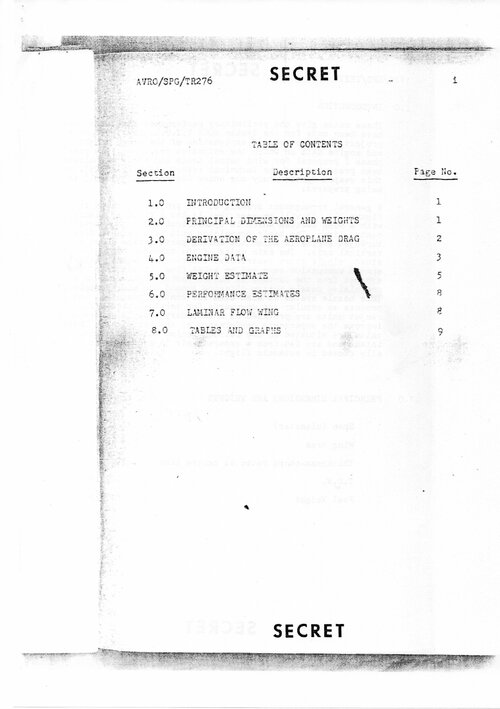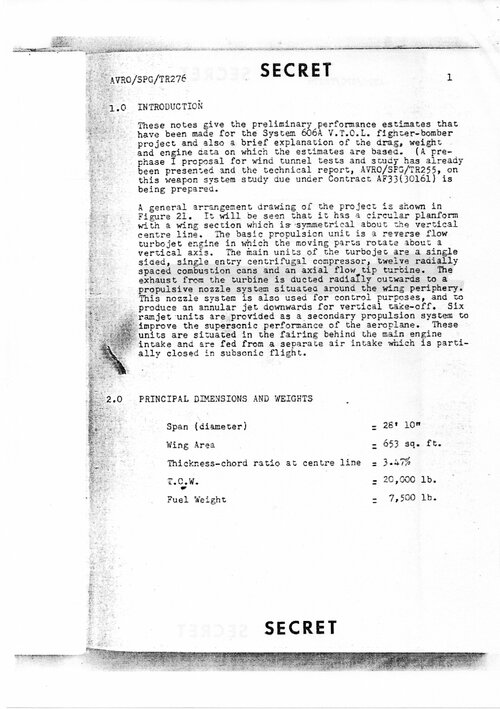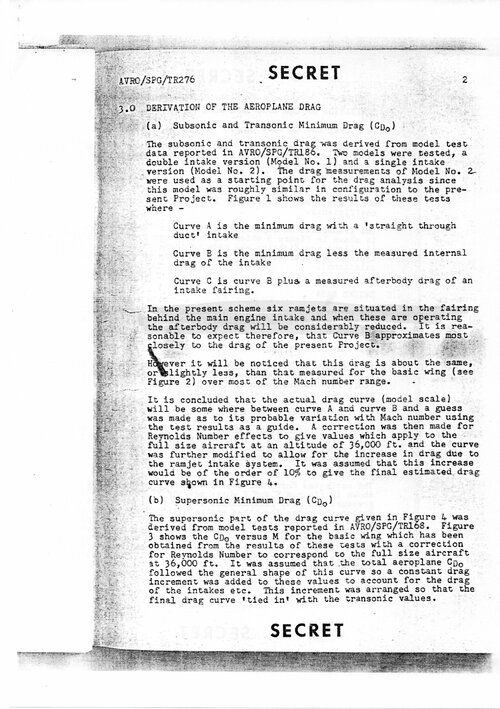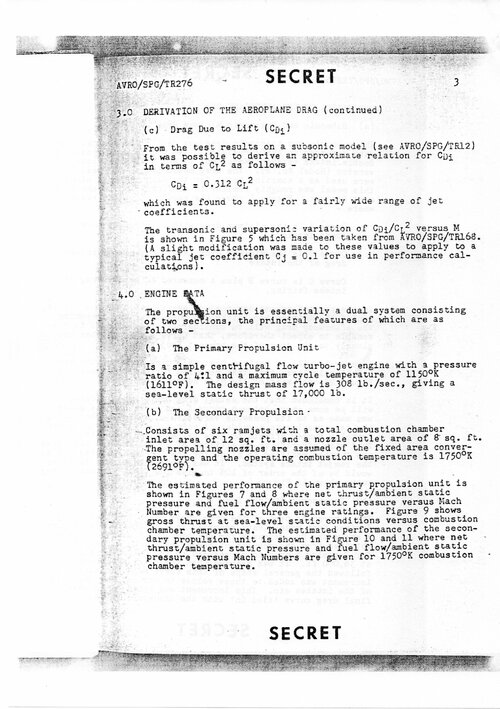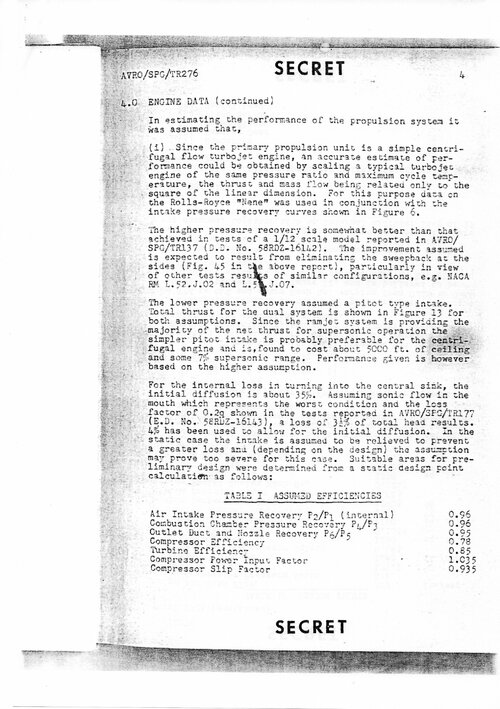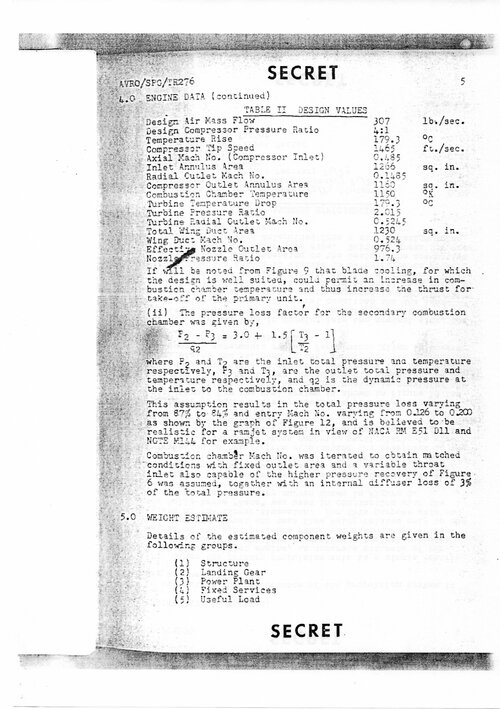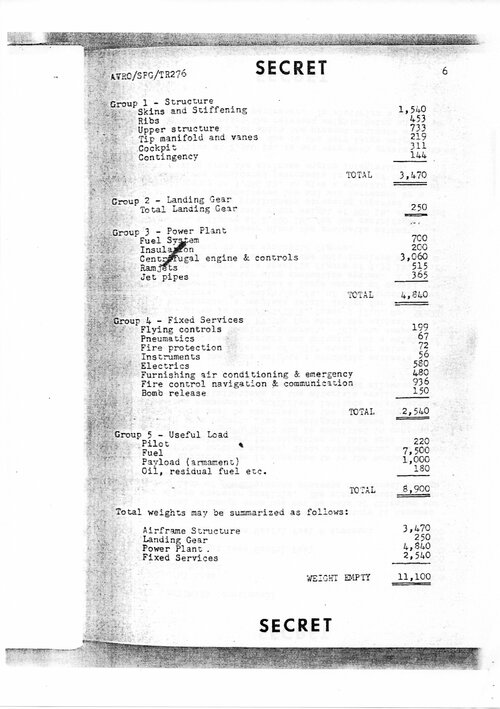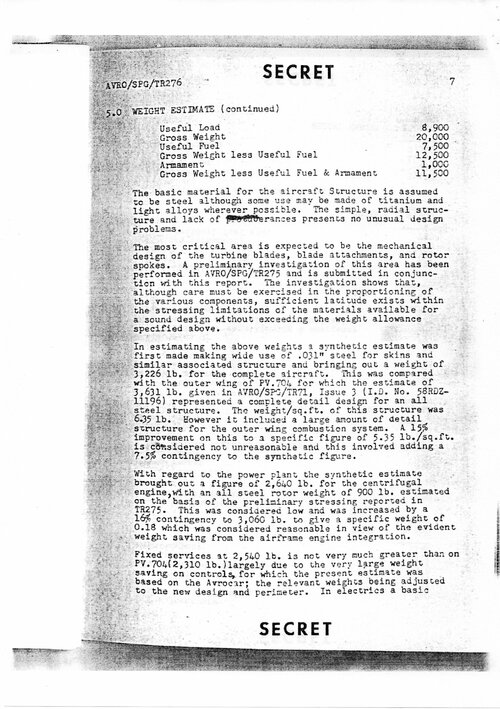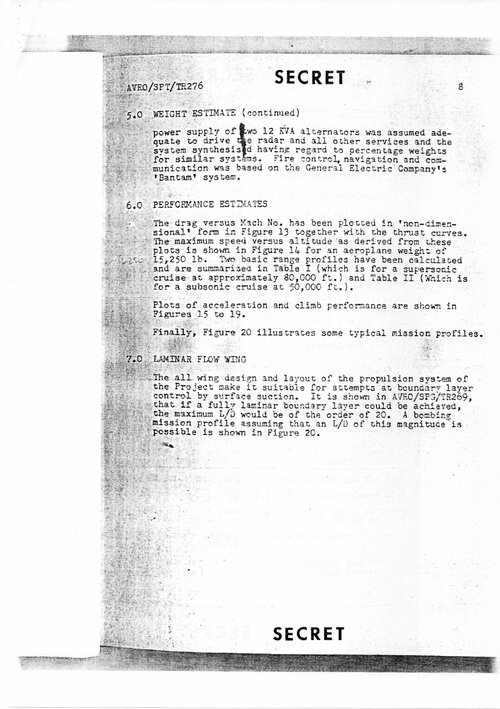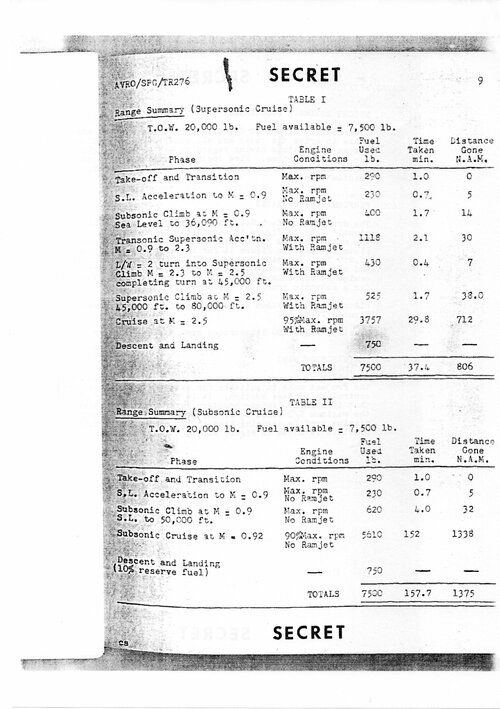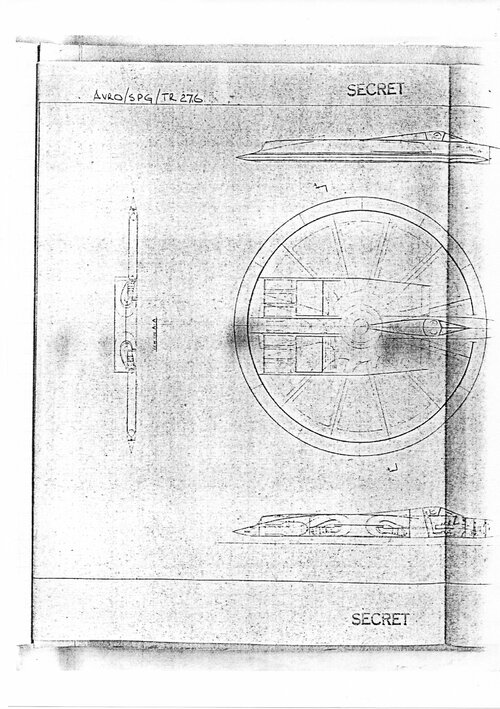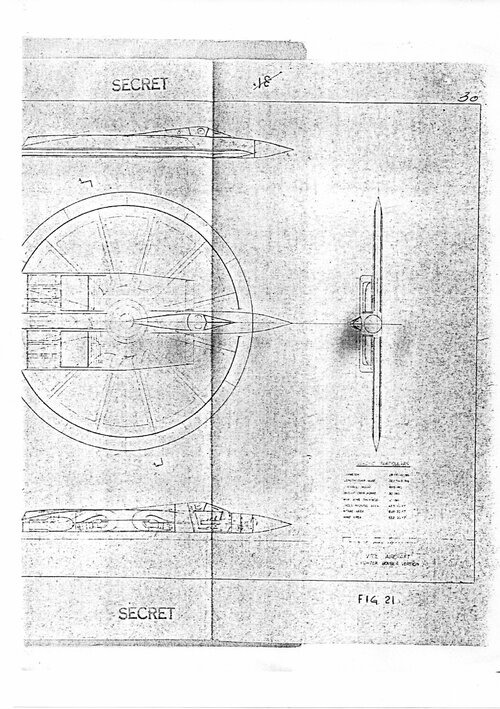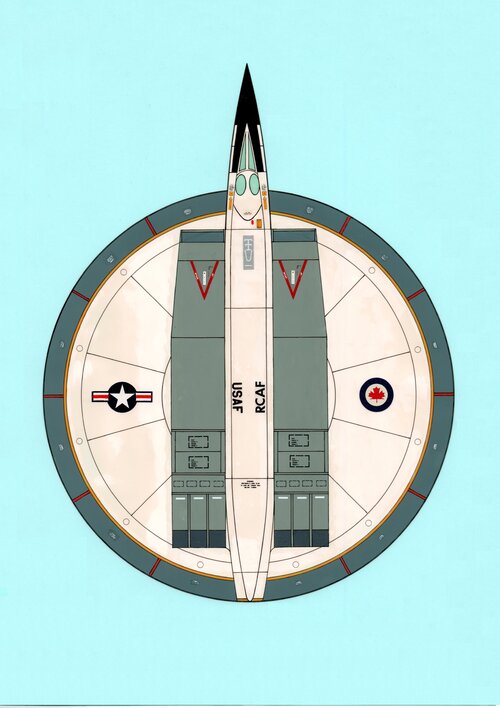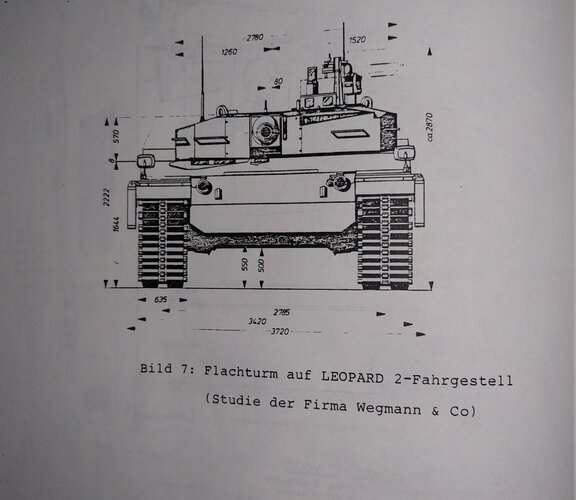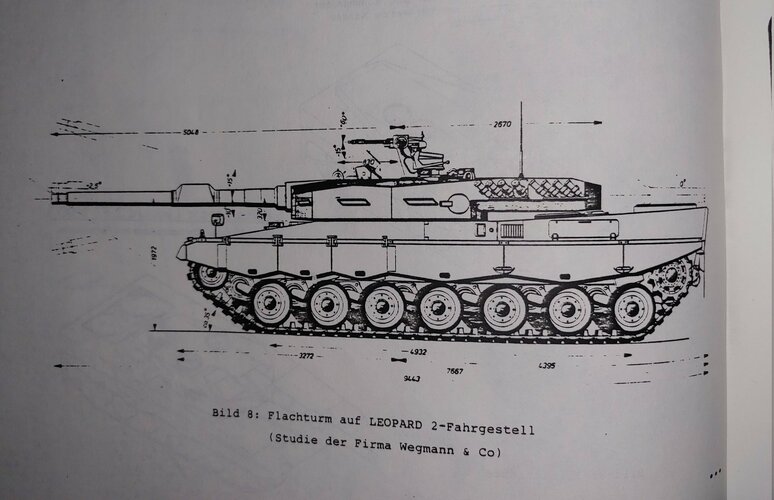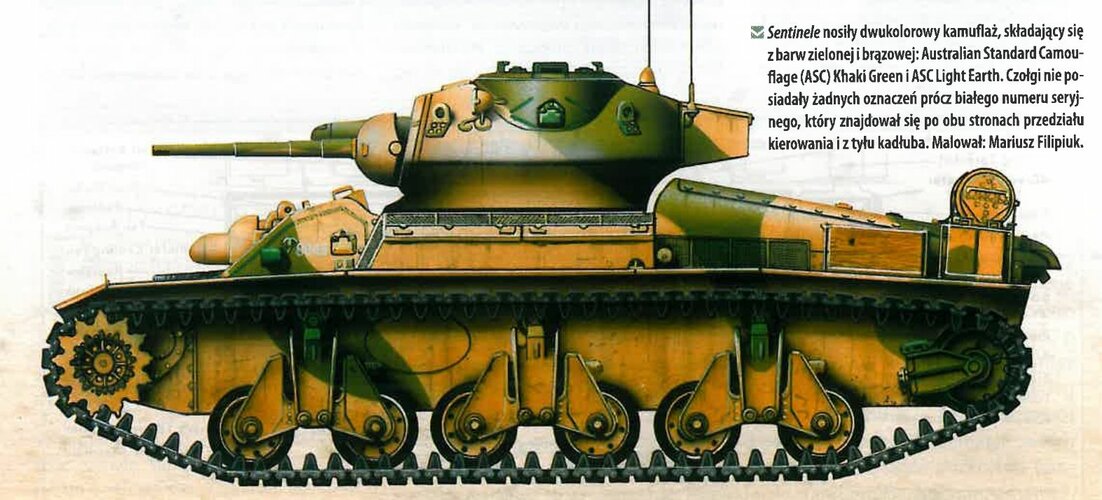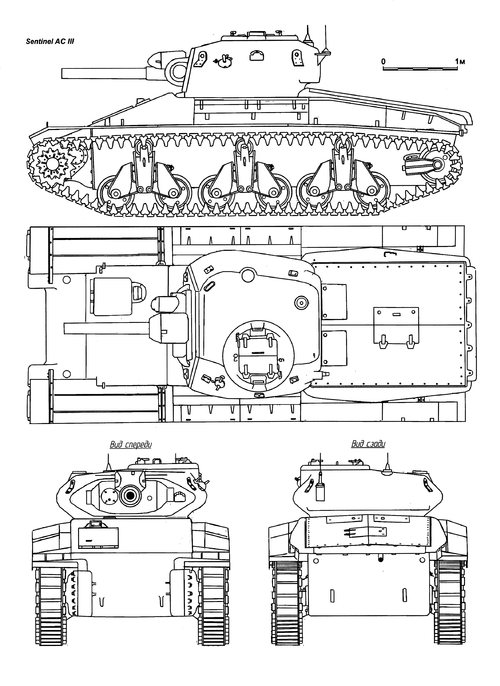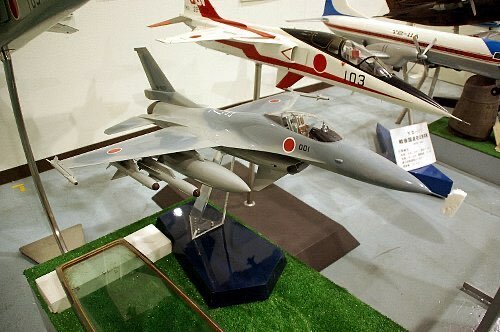From “Flying Wings and Flying Saucers”
On March 27, 1957, the USAF extended the Project 1794 through October 1958 under the codename Weapons System WS-606A. The new research program was based on the GETOL (Ground Effect Take-off and Landing) concept that promised a fuel consumption rate 35 per cent lower than the VTOL system.
In January 1959 Avro issued Technical Report Nº 276 with preliminary performance calculations of a single seat Mach 3 tactical bomber, with GETOL and VTOL capabilities, known as ‘Configuration A’.
Propulsion was provided by one radial-flow turbine, twelve combustion chambers and six Marquardt ramjet engines. Exhaust from the turbine was ducted radially outwards to the combustion chambers and to the propulsive nozzle system mounted around the wing periphery. Vertical take-off was achieved by diverting the thrust downward and forward flight acceleration was achieved by diverting the flow aft. This was sufficient to reach the ignition velocity of the ramjets, for supersonic cruise.
The nozzle system was also used for control purposes but the manufacturing difficulties of obtaining accurate flow passages were severe.
One reconnaissance version was considered as successor of the Lockheed U-2 spy plane. It was expected that the jet control was more efficient at high-altitude than the conventional control surfaces, but the Lockheed
Blackbird was finally selected.
Configuration A technical data
Airframe: steel, titanium and light alloy, 37 ft (11.28 m) length, 4.7 ft (1.42 m) height, wing: laminar flow with boundary layer control by surface suction, 28.8 ft (8.79 m) of diameter and 653 sq. ft surface, thickness-chord ratio 3.47 per cent, estimated top speed: Mach 2.5 at 80,000 ft and Mach 3.0 at 95,000 ft, estimated climb rate: 354 m/sec, empty weight: 11,100 lb., max weight: 20,000 lb., range with 7,500 lb. fuel: 806 miles (supersonic) and 1,375 miles (subsonic), tactical range with one Mk 28 nuclear bomb: 600 miles, fire control, navigation and communications were based on the General Electric
Bantam system.
A second two seat design, known as ‘Configuration B’, was a Mach 2 all-weather interceptor powered by two Pratt & Whitney J58 turbojets, with 46,000 lb. combined thrust, and one radial-flow turbine located in the center of circular wing.
Configuration B technical data
Diameter: 35.3 ft (10.74 m), length: 44.7 ft (13.6 m), height: 6.5 ft (1.97 m), wing surface: 978 sq. ft, estimated max speed: Mach 2, estimated ceiling: 65,000 ft, max weight: 65,500 lb. (29,670 kg), combat radius (VTOL): 500 miles (805 km), combat radius (GETOL): 700 miles (1,126 km), proposed armament: two air-to-air missiles.
During test-rig trials conducted in October 1956 the turbine blew so hot (1,750º K) it melted the steel structure and its violent shaking would pop the rivets, causing three fires, hazardous oil leaks and nearly a catastrophic incident occurred with a
Viper turbojet running out of control.
Noise and vibrations made the prospects of a manned vehicle frightening. The Lundström compressor produced a dangerous sonic boom at the point that observers were afraid of the machine.
During the flight tests of the XF-84F performed in July 1955 the USAF have had bad experiences with the sonic waves produced by the supersonic propeller of the prototype. The ground crews were incapacitated getting nauseous and suffering headaches.
The wind tunnel tests suggested that the GETOL configuration had severe stability problems and the craft was in constant danger of flipping over during take-off. The circular wing was displaying none of the theoretical advantages and a lot of practical shortcomings.
The WS-606A configurations were simply too advanced and the technical challenges too great: a dead-end project with insurmountable problems of overheating, ball-bearing over-speed, and gyroscopic effect. By March 1958, USAF recommended that all work on the GETOL concept and their radial-flow turbine should be halted. There is no evidence that anyone has engineered an example of radial-flow turbo-disc engine.

